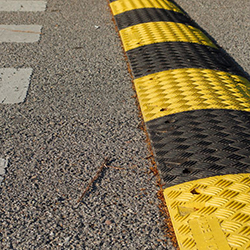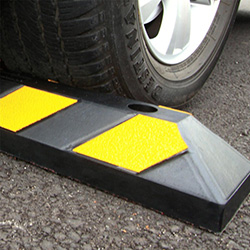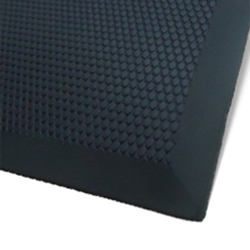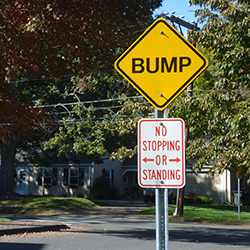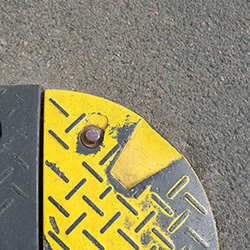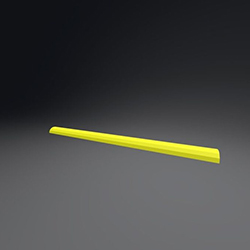Traffic thresholds
Speed bumps, also known as traffic thresholds or sleeping policemen, are raised sections across roadways designed to slow vehicle traffic for safety purposes. They’re commonly found in areas where vehicles and pedestrians share space, such as residential...
Sleeping policemen
Speed bumps, also known as speed breakers or sleeping policemen, are traffic calming devices designed to slow vehicles in areas where safety is a priority. These raised sections of the road, typically made of asphalt, concrete, rubber, or plastic, are elevated several...
How Speed Bumps and Humps Improve Traffic Safety
Controlling vehicle speed is crucial in areas where pedestrian safety is a concern. Speed bumps and humps are common traffic-calming devices that play a vital role in reducing accidents and enhancing safety. But what makes them so effective? Join us as we delve into...
Speed bumps FAQ
Speed Bumps for Sale: Enhance Safety and Traffic Management Solutions Speed bumps play a crucial role in traffic management and safety. They are designed to slow down vehicles, especially in areas with high pedestrian traffic. When looking for speed bumps for sale,...
The Role of Parking Blocks in Creating Safe and Organized Parking Areas
When managing a parking lot, safety and organization are top priorities. But did you know that something as simple as parking blocks can make a significant difference? Stay with us as we explore how parking blocks contribute to the efficiency and safety of parking...
Frequently Asked Questions about SPEED BUMPS
1. What is the difference between a speed hump and a speed bump? Speed humps and speed bumps are both traffic calming devices, but they differ in design and function. A speed bump is shorter and more abrupt, requiring vehicles to slow down significantly, typically to...
The Importance of ESD / Switchboard Mats in Your Facility
In environments where static electricity and electrical hazards are a concern, safety is paramount. Did you know that ESD / switchboard mats could be the solution? Discover how these specialized mats can safeguard your facility, equipment, and personnel, and why...
Understanding the Difference Between Speed Bumps and Speed Humps
Have you ever noticed the varying shapes and sizes of raised pavement sections on roads and wondered why they differ? The answer lies in the distinction between speed bumps and speed humps. Each is designed with a specific purpose to enhance traffic safety. In this...
How Speed Bumps Contribute to Traffic Safety
Can something as simple as a bump on the road really make a difference in traffic safety? The answer is a resounding yes. Speed bumps are not just obstacles to slow down drivers; they play a critical role in reducing accidents and enhancing overall road safety. This...
Speed bumps for sale in USA
Speed bumps are essential traffic calming devices used to slow down vehicles and enhance safety in various environments such as parking lots, residential areas, school zones, and private roads. When considering purchasing speed bumps, it’s important to understand the...
The Benefits of Speed Bumps in Traffic Management
Have you ever wondered how a small bump on the road can have such a significant impact on traffic management? Speed bumps are a crucial part of traffic calming measures, designed not just to slow down vehicles but also to enhance overall road safety. This article...
The Environmental Benefits of Speed Bumps and Speed Humps
When we think about speed bumps and speed humps, the first things that come to mind are their roles in enhancing road safety and controlling traffic speed. However, did you know that these traffic calming measures can also contribute to environmental sustainability?...



